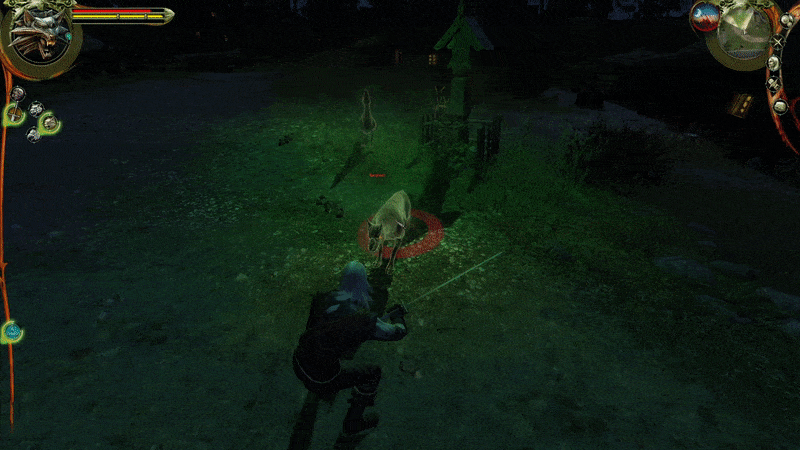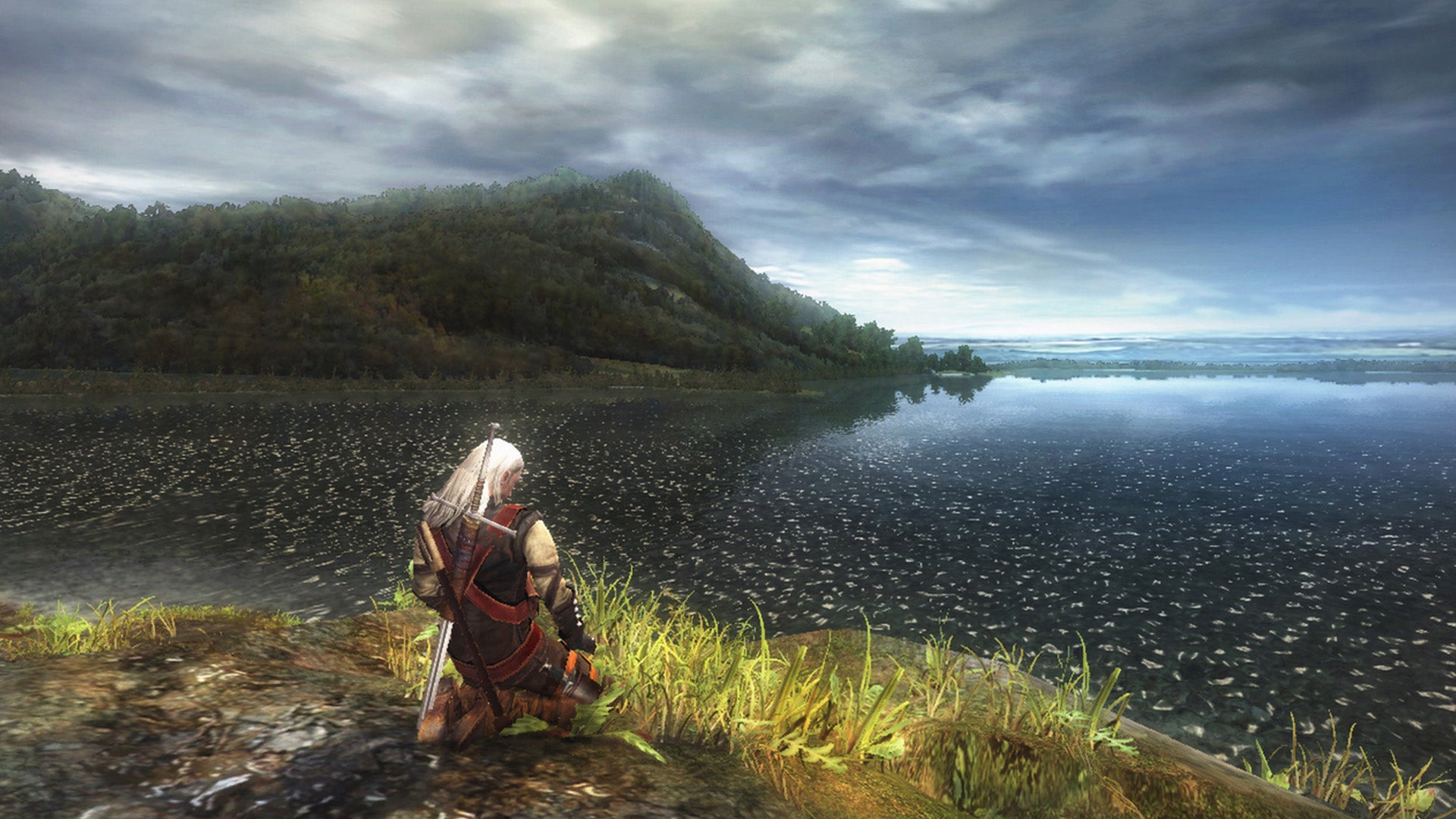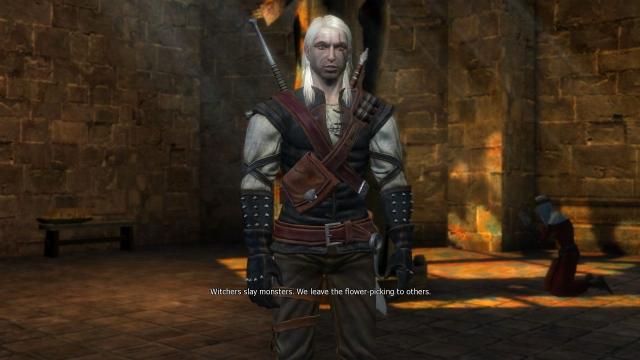Like many, my first Witcher game was The Witcher 3: Wild Hunt in 2015. I sunk countless hours into it as I fell madly in love with the characters, but after I finished it, I knew I had to go back and play the first one. It’s not uncommon for the first Witcher game to be swiftly disregarded when discussing the trilogy. The 2007 title is often seen as an ugly, obtuse, clunky hack of Bioware’s Aurora Engine that you can skip over in favour of the shinier, newer sequels. But so much of what makes The Witcher 3: Wild Hunt work is established in The Witcher — it crawled so Wild Hunt could run.
Yes, the animations are strange, character models are repeated, and dialogue is laughably stilted at times. But The Witcher is an inspired early effort featuring characters we know and love as well as all the components that were executed better and celebrated for in its sequels. The strengths and charm of the later Witcher games are present in the original, yours to enjoy if you’re willing to give it a try.
The Witcher is Metallica’s Ride The Lightning before Master of Puppets. It’s Pitch Black before The Chronicles of Riddick. It’s Bound before The Matrix. It’s season one of The Expanse before season three. The Witcher is a product of the time, talent, and resources it had available to it. And if you can look past its rust, particularly with the Enhanced Edition that’s available on Steam and GOG, it’s actually a delightful RPG.
Read More: The Original Witcher Is Getting A Fancy New Unreal 5 Remake
Let’s address the ancient leshy in the room: the combat. The Witcher’s combat is hardly in most gamers’ top ten lists of RPG fighting systems. But consider the game’s narrative and how the combat actually works: Much of the in-world talk in The Witcher (and its sequels) about the ways witchers fight concerns discipline and training. It’s a part of the “path” witchers walk. If the games are to take this material seriously, then there should be a clear resonance between the narrative meaning of fighting as a witcher and the need to use appropriate stances, strike at the right time, have the correct potions at the ready, and know when to deploy the right signs to cast quick spells in the game. To fight well in The Witcher is to have a mastery of this system, and the game provides a means to live out that fantasy of discipline through its combat.
The combat is definitely unique, but it’s by no means bad or hard to understand — it’s all based on timing. You basically queue up an attack by clicking the mouse when the icon shows the correct symbol, which becomes a kind of metronomic beat that guides you through the combat. The result is an interesting mix of the restrictions of turn-based combat and the chaos of real-time combat. Honestly, the timing element of it is kind of fun. As you chain your attacks together, Geralt speeds up, executing faster strikes and spins. It’s a rewarding and fun path to follow. You just need to get into the groove of it.
After a few rounds where I let the combat dictate a rhythm for me to follow, I found it a comfortable and gentle departure from the usual wandering and talking you do in the game, as opposed to a harsh left turn into a violent battle sim. While I enjoy the changes to the combat in The Witcher 2 and 3, it demands far more real-time response, lacks the natural rhythm of the first, and sometimes feels like a less desirable pivot from storytelling and dialogue. The Witcher’s combat feels less stressful once you get the hang of it, so much so that I kind of wish this system would’ve returned in the later games to be improved upon.

And while the beloved characters and their voice actors mature and ripen in the later games, The Witcher already knows how to bring them to life. This starts with environmental design: There’s a dynamic time of day and weather that changes with it. NPCs wake up in the morning to go about their daily tasks, giving a sense of life to these environments. When it rains, they seek shelter and comment about the weather. These feel like towns and cities where people can and seem to live out their daily lives. The world design helps create a living backdrop for these personalities, which is so important since so much of the narrative is about the protagonists existing as distinctly separate individuals from this fictional society.
When we step into the lives of the main characters, we get to see them really come to life in a way that isn’t always common in medieval fantasy. Much of that character depth is found in the game’s quirky side quests, which expand upon the serious, somber personalities so often seen during the narrative’s more mature moments. The best example of this is with “Old Friend of Mine,” a quest where the goal isn’t to slay a monster, but to throw a fun party for a group of friends. It is symbolic of the beauty and tragedy at play in The Witcher: beauty because you love to see these characters happy and enjoying life; tragedy because you know this is an exception to the draconian rule of their day-to-day lives.
In an “Old Friend of Mine,” Geralt, Shani, Zoltan, and Dandelion face a quest of a more noble cause than any hike to throw a stupid ring into a volcano: It’s late, everyone’s drunk, and folks are in the mood for some grub. How will you possibly save the day and slay the beast that is drunken hunger? By stumbling down to Shani’s landlady’s kitchen and stealing some pickles and lard, of course. You must guide Geralt, who’s completely hammered, downstairs to save the day. If you’re caught, you’ll be scolded. But if successful, you’re a true hero.
If a fantasy game can’t make you laugh and smile, then there’s nothing worth saving during its darker moments. The Witcher’s slices of humour are important because they both prove and preserve the humanity in Geralt that this society continuously tries to erase (either violently, or through subtle ways of reminding him that he’s different from everyone else). It’s no secret that Geralt is an outsider. That he has to carry around two swords is symbolic of the sad truth: he must defend himself from monsters and humans equally, and the lines between the two are often blurred.

Early on in The Witcher, Geralt meets an alchemist who asks to examine his body. The mere sight of a witcher, whose body bears bold scars and signs of chemically-induced changes, sparks an invasive curiosity in this man. When Geralt asks if this man of science is so forthcoming with everyone’s body, he says no. Witchers, the alchemist says, are of incredible scientific curiosity; they’re aberrations among normal people, so to him it’s perfectly acceptable to ask such invasive questions. Witchers, when not feared or hired for work, are spectacles to normal folk.
I too have had similar experiences. The sharing of my pronouns, even the sight of me, the sound of my voice, also prompt invasive prodding. Questions about hormones, surgery, my childhood, all of it the subject of a curiosity some people feel no shame about openly expressing. If I, like Geralt, wonder if such a person asks these kinds of questions of anyone, the answers mirror one another. Trans people, when not feared or hired for work, are often spectacles to cis folk.
The Witcher tells the story of characters who are marginalised by society and must find a way to accept it, challenge it, and thrive within it — despite that society wishing they wouldn’t. The analogies to our world aren’t always perfect and there’s plenty of room for criticism (especially concerning the “sex cards” you can “earn”). But at its core The Witcher, starting with the very first game, resonates with me not because it’s an escape from my existing world, but because it’s an acknowledgement of how fucked things can be, and why moments of joy and laughter are worth celebrating or fighting for. It’s what makes memes about Geralt as a supporter of queer and trans rights feel so accurate.
As a game, it’s an endearing artefact from a different time and place, filled with early prototypes of what I came to love in Assassin of Kings and Wild Hunt. There is no Witcher 3 without The Witcher, and playing it richens the narrative experience of the entire trilogy. The Witcher knew back then that Geralt’s story couldn’t just be told with a set of mindless monster-slaying quests, it had to give us the role of Geralt to assume, both when he’s wielding a set of blades or stealing a jar of pickles–but always when he’s existing on the margins.

Leave a Reply